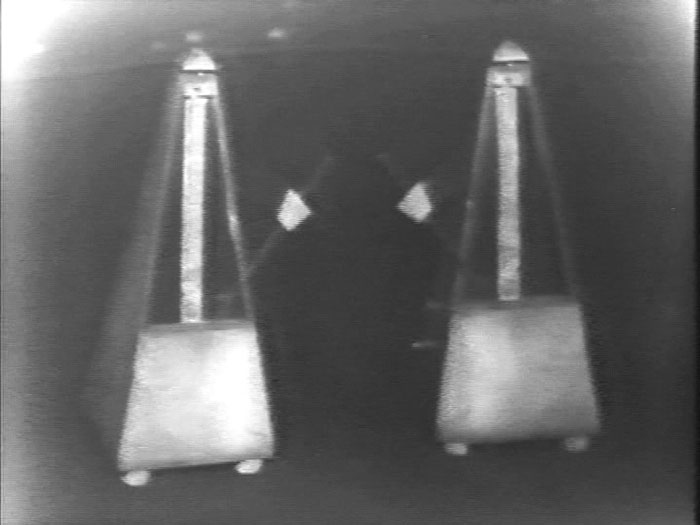- Sie sind hier: Startseite / Aktuelles
The Freedom of Sound – JOHN CAGE
Grzegorz Zgraja / Audiovisuelles Experiment I/ 1977 / VHS / 3:10
Freedom of Sound – JOHN CAGE behind the Iron Curtain
On the occasion of the 100th anniversary of the birth of John Cage, Ludwig
Museum – Museum of Contemporary Art presents the exhibition entitled The
Freedom of Sound – John Cage behind the Iron Curtain between 23 November,
2012 and 17 February, 2013.
Artists in the show include:
JOHN CAGE, Erdély Miklós, Milan Grygar, Ciprian Muresan, Collective Actions
/ Andrei Monastirsky, Viktor Alimpiev, Jiri Valoch, OHO Group, Deimantas
Narkevicius, Sanja Ivekovic, Grzegorz G. Zgraja et al.
Advisors:
László Beke, Niksa Gligo, Daniel Grün, Boris Groys, Alexander Ivashkin,
Antoní Michnik, Pavlina Morganova, Misko Suvakovic, András Wilheim et al.
John Cage (1912-1992) was one of the major figures of avant-garde music, a
versatile artist who was also a performer, lecturer, author, and visual
artist. Throughout his career, Cage performed and lectured all over the
world. With his visits to the countries that once were behind the so-called
Iron Curtain, and with his live performances (for instance at the Zagreb
Music Biennial in 1963, or the Warsaw Autumn Festival in 1964) he had a huge
impact not only on composers but also on many young artists in Central and
Eastern Europe. Besides concerts and performances and presenting his visual
artworks and scores, the exhibition explores John Cage’s Eastern European
travels and connections with the local art scenes, and, through the works of
contemporary artists from Central and Eastern Europe, his still existing
influence on this region.
By introducing Chance and Indeterminacy into artistic practice – ideas that
in the ideologically-politically determined Eastern-European mentality
equalled freedom not only in artistic terms–, Cage has always been an
important reference point for artists who challenge the traditional notion
of authorship, who question the old concepts of the artwork and who refuse
to renounce their artistic freedom because of official politics. Thus, the
sound-installation Writing through the Essay, ‘On the Duty of Civil
Disobedience’ (1985/91) is the centre of the exhibition. The randomized
sentences cited from Henry David Thoreau’s essay of 1849 point out that it
is the duty of every person to refuse to cooperate and to tolerate the
ensuing penalty if the government pursues a policy of injustice.
Thoreau also said that “All sound is nearly akin to Silence; it is a bubble
on her surface which straightway bursts, an emblem of the strength and
prolificness of the undercurrent” – an idea that was also crucial for John
Cage who deliberated sound from any musical constraints, and this freedom of
the sound that the music of John Cage represented still echoes in numerous
works of contemporary artists.
Weitere Informationen:
› Zur Website des Veranstalters

